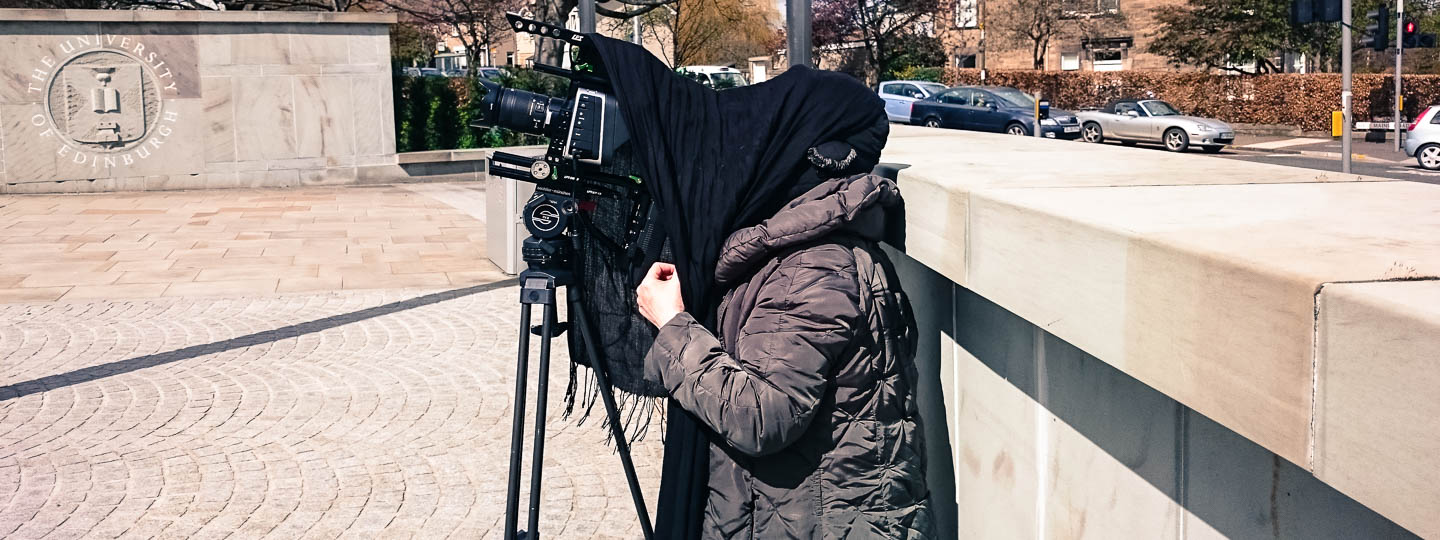A recent email from Jamie Dunn at The Skinny got me thinking. In it he asks three questions about my thoughts on making independent films, finding an audience and whether event screenings are the way to go. That Voyageuse is showing at the GFT next week and at Picturehouse Central next month is a coup, just when I was about to commit the DCP to a drawer, destined to exist only among the morass of online content.
So thanks Jamie, you’ve made me think. Among the thoughts you prompted is a reminder of when I made my first feature almost 20 years ago, a time when everyone from Hollywood A-listers to Danish mavericks to chance-their-arm UK production companies believed that DIY, micro-budget, DV-driven films would fill their boots. Guess what? They didn’t. They toyed with the notion, made their tapes and grabbed the headlines only to realise no one gets a payday out of no-budget films, and so reverted to the same old high-budget ways of making their movies.
The wave crashed and with it the energy sparked by wannabes like me who only wanted to make a film, or like Lance Weiler, whose micro-budget The Last Broadcast (1998) was a heavy precursor to The Blair Witch Project (1999) the legendary micro-budget movie that grossed over $150m. At the time I swapped emails with Lance who was justifiably miffed because the similarities between his original film and TBWP are remarkably striking.
Hard to believe now but in 2000 the only way to show a DV film at a cinema or festival was to shoot out via a digital internegative, i.e. to transfer digital tape to 35mm film, a prohibitively expensive business out of kilter with the DIY spirit of anyone making films on camcorders and one which excluded those films from ever reaching an audience; YouTube was yet to be invented.
Fortunately that year I became the first director to have their work screened digitally in the UK, thanks to Mike Hood, the then marketing director of Digital Projection Ltd., makers of the first cinema-quality projectors in the country. At their Manchester base, Mike took a shine to me for my audacity and agreed to support my cast and crew screening.
So on 15th January 2000 – my birthday – history was made when Mike (plus a few others) hauled his magic lantern up the narrow stairs to the projection room of Cinema 1 at the GFT. It was quite a day, including me doing an interview for BBC’s Tomorrow’s World about the future of cinema, shot – ironically – by a one-man producer/cameraman/sound-recordist who used the same Sony camcorder – a VX1000E that I shot my film on. He also carried a makeup kit.
I soon learned that – inadvertently – OLS pipped Pixar to the post on the very week they ran full-page ads in the newspapers announcing that Toy Story would be the first digitally-projected film in the UK. Later, for a laugh, I wrote to Pixar to say I beat them to the punch. Not that I expected a reply. Had it not been for Mike’s generosity (and his genuine love for OLS) the film would never have screened at film festivals in Europe and the US or caught the attention of critics.
This would be mere anecdote but for my own observation, four films on, that in 2018 filmmakers face similar problems. Technically it’s now cheaper and more accessible to make movies than it was when I made OLS. The quality’s better, the options in post-production are almost infinite – as I found when making Voyageuse which possibly has the most invisible CGI of any recent film.
The biggest challenge faced by filmmakers today is visibility over availability. Anyone can upload their wares to YouTube, Vimeo or any other platform but in terms of the ‘right attention’ – positive reviews, insightful criticism and the kind of academic inquiry that leads to inclusion in the canon – it’s hard for filmmakers to get heard over the noise of the millions of others, unless of course a film can secure a festival screening or a theatrical release.
So what’s new? Not much. Cinema still rules. Rightly or not, the big screen confers a certain prestige, just as old media – print, radio and TV – lends a film more credibility than any amount of online shouting.
To compete with the multiplexes, arthouse cinemas now host regular events where the filmmaker or actors come face-to-face with the audience. While there’s definitely an appetite for Q&As, I have my doubts about their financial viability, especially for relatively unknown filmmakers embarking on, say, a 10 or 20 date tour. But with so few low-budget films attaining a cinema release, any chance to screen theatrically is a plus – as I’m about to discover over the coming weeks and months.
The above image is of me shooting the exterior of the Zoology Building at Edinburgh University for Voyageuse in 2016. The black scarf round my head helped to block reflections in the viewfinder. It became an essential piece of kit.

